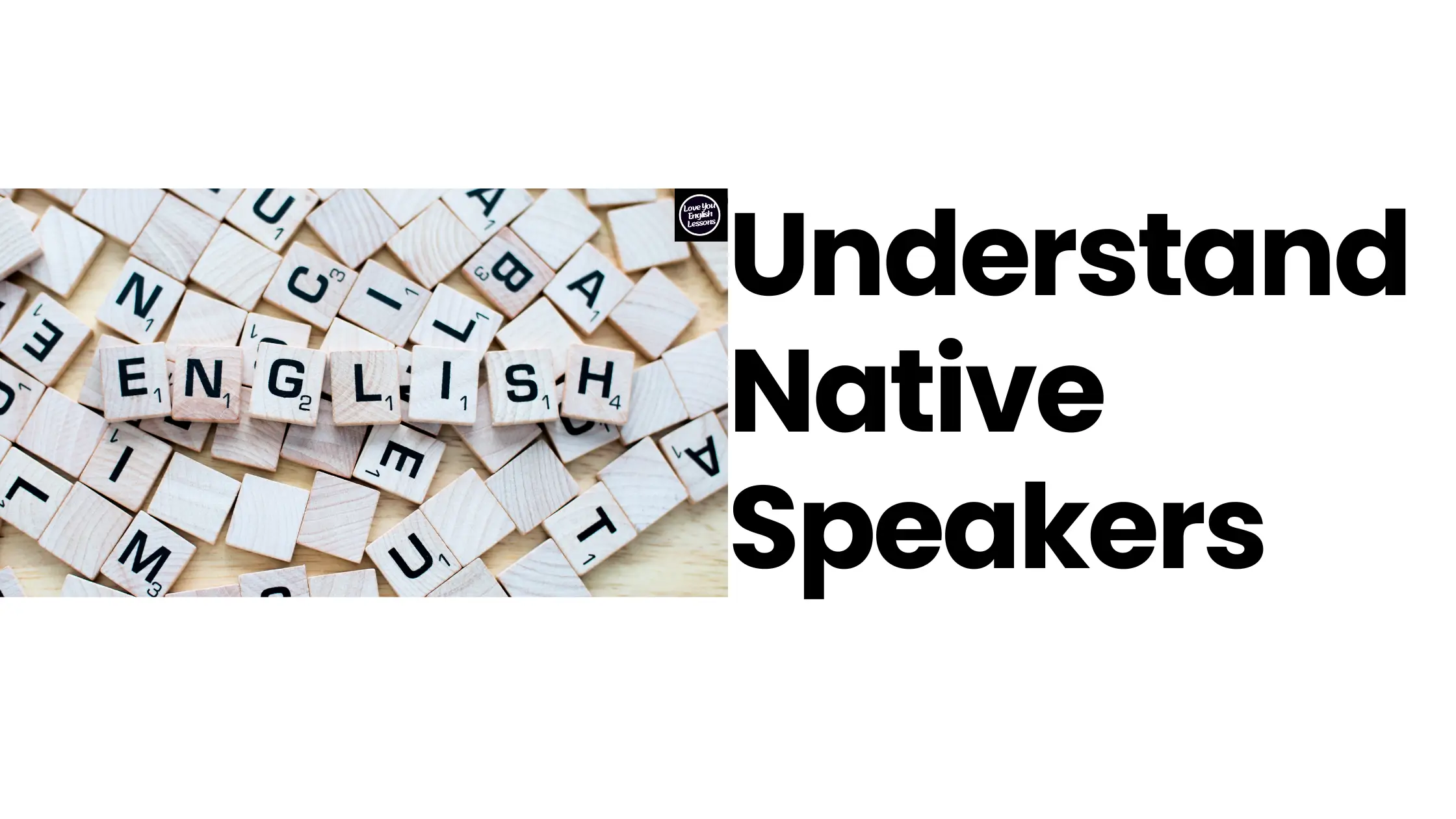A Guide to Understanding Native English Speakers
Understanding Native English Speakers
Have you ever found yourself in a conversation with a native speaker and felt like you were lost in translation?
Fear not, for understanding native speakers is a linguistic adventure that many embark upon.
In this lesson, we’ll go into detailing of understanding native speakers, exploring the nuances, challenges, and strategies to bridge the communication gap.
So, grab your linguistic compass, and let’s set on this journey of decoding the language of native speakers.
Complexity of Native Speech
Native speakers can effortlessly play around with their own language.
However, beneath their casual chats, there is a hidden world of tricky language details.
From special phrases and informal words to cultural references, understanding native speakers is like solving a puzzle that is always changing.
The Art of Observation
To understand native speakers, start by becoming an observant language detective. Pay attention to the way they use expressions, gestures, and tone.
Native speakers often communicate not just through words but also through body language and facial expressions.
The subtle raising of an eyebrow or a sly grin can carry as much meaning as a well-chosen word.
Furthermore, observe the cultural context. Language is deeply intertwined with culture, and native speakers effortlessly blend both.
So, take note of the cultural references that sprinkle their conversations like confetti.
Whether it’s a mention of a local event, a pop culture reference, or a historical tidbit, these nuggets offer valuable clues to understanding the native lexicon.
Slang and Idioms
Native speakers have a penchant for injecting their language with colorful expressions, and this is where slang and idioms take center stage.
These linguistic oddities can be perplexing for language learners but fear not – they are the spice that adds flavor to conversations.
Slang, the rebel of language, is ever-changing and can leave even native speakers scratching their heads.
It’s the secret handshake of communication, a way for speakers to connect on a deeper, more informal level.
To crack the code of slang, immerse yourself in the language by watching movies, TV shows, and engaging in conversations with native speakers. Soon enough, you’ll be slinging slang like a pro.
Idioms, on the other hand, are the cryptic puzzles of language.
They paint vivid pictures with words but can be a stumbling block for non-native speakers.
Don’t be disheartened; instead, treat idioms as linguistic treasures waiting to be discovered.
Make a list, explore their origins, and gradually incorporate them into your own lexicon.
The Rhythm and Melody
Language isn’t just about words; it’s a symphony of rhythm and melody. Native speakers effortlessly dance to the beat of their linguistic tune, and to understand them, you must groove along.
Pay attention to the cadence of their speech, the rise and fall of intonation, and the pauses that add punctuation to their sentences.
Listening to native speakers in various contexts – from casual conversations to formal settings – will help you tune your ear to the nuances of their speech.
Mimicry is your ally here; try to replicate the rhythm and melody of native speakers. It’s not about sounding like a parrot but about internalizing the natural flow of the language.
Cultural References
Native speakers often sprinkle their conversations with cultural references that can leave non-natives feeling like outsiders at an inside joke party.
However, decoding these references is like unlocking a treasure chest of linguistic and cultural insight.
To bridge this gap, immerse yourself in the culture associated with the language you’re learning.
Whether it’s literature, music, movies, or local traditions, understanding the cultural context enriches your comprehension of native speakers.
Attend cultural events, read local publications, and explore the roots of the language to unravel the layers of meaning embedded in their references.
The Pitfalls
Understanding native speakers is undoubtedly an exciting journey, but it’s not without its share of pitfalls.
Let’s explore some common stumbling blocks and how to navigate them.
The Speed
Native speakers have a reputation for speaking at the speed of light, leaving language learners feeling like they’re chasing a linguistic Ferrari on a tricycle.
The key here is patience and practice.
Start by listening to slower-paced content, such as podcasts designed for language learners. Gradually increase the speed as you become more comfortable.
Engage in conversations with native speakers who are willing to adjust their pace for your benefit. Remember, it’s not a race – take your time and savor the journey.
The Fear of Making Mistakes
The fear of making mistakes is a universal language learner’s dilemma. Native speakers, however, are generally forgiving and appreciate the effort put into learning their language.
Embrace your mistakes as steppingstones to fluency. A mispronounced word or a grammatical slip-up is not a failure but a valuable lesson on the path to linguistic mastery.
Create a supportive language-learning environment where making mistakes is encouraged and celebrated. Native speakers will often provide gentle corrections, helping you refine your language skills organically.
Cultural Sensitivity
Every language comes with its set of cultural taboos, and native speakers effortlessly navigate these nuances. As a language learner, it’s essential to be aware of cultural sensitivities to avoid unintentional faux pas.
Educate yourself about cultural norms, traditions, and acceptable forms of expression.
Language is not just about words; it’s a vessel of cultural identity.
Respectful communication involves understanding and embracing the cultural nuances that shape language use.
Strategies for Seamless Communication
Now that we’ve unraveled the complexities and pitfalls, let’s delve into strategies that will elevate your understanding of native speakers to new heights.
Active Listening
Active listening is the unsung hero of language learning.
It goes beyond merely hearing words; it involves fully engaging with the speaker, processing information, and responding appropriately.
Train yourself to listen actively by focusing on the speaker, eliminating distractions, and paraphrasing what you’ve heard to confirm your understanding.
Practice active listening with various native speakers, both in person and through audio materials.
The more you immerse yourself in the sounds of the language, the more attuned your ears will become to native speech patterns.
Conversational Immersion
Language is a living entity, and the best way to understand native speakers is to dive headfirst into real conversations.
Seek out language exchange partners, join language meetups, or participate in online forums where native speakers gather.
Conversational immersion not only enhances your understanding but also builds your confidence and fluency.
Remember, native speakers appreciate genuine efforts to engage in their language, even if your proficiency is a work in progress.
Don’t shy away from conversations; embrace them as opportunities for growth.
Ask Questions
Curiosity is the engine that drives language learning. Native speakers are often more than willing to share insights into their language and culture.
Don’t hesitate to ask questions when something confuses you or piques your interest.
Asking questions not only clarifies uncertainties but also demonstrates your enthusiasm for the language.
Native speakers appreciate learners who show genuine curiosity and a willingness to delve deeper into the intricacies of their mother tongue.
Expand Your Vocabulary
Building a robust vocabulary is a marathon, not a sprint. Instead of overwhelming yourself with memorization, focus on expanding your vocabulary gradually.
Start with commonly used words and phrases, and then incorporate more advanced vocabulary as your proficiency improves.
Reading extensively in the language is an excellent way to expose yourself to a diverse range of words and expressions.
Novels, articles, and even social media posts can provide valuable insights into the vocabulary used by native speakers in different contexts.
Language Learning Apps
In the digital age, language learning apps have become invaluable tools for learners seeking to understand native speakers.
Apps like Duolingo, Babbel, and Rosetta Stone offer interactive lessons, immersive exercises, and real-life scenarios that mimic conversations with native speakers.
Take advantage of these apps to supplement your learning journey.
The gamified nature of many language apps makes the process enjoyable, turning language acquisition into a playful adventure.
Conclusion
Understanding native speakers is not an endpoint but a continuous journey marked by exploration, curiosity, and a willingness to embrace the linguistic and cultural nuances that make a language come alive.
The road may be winding, with occasional detours and challenges, but each step brings you closer to fluency.
So, as you embark on this casual quest to understand native speakers, remember to observe, embrace oddities, tune in to the rhythm, and decode cultural references.
Navigate the pitfalls with patience, active listening, and cultural sensitivity.
And above all, stay curious, engage in conversations, and let the language unfold its secrets as you journey towards becoming a fluent and confident communicator.
Read more:
- The Ultimate Guide to Book Apps
- Tips for Writing Essays in English: Improve Your Writing Skills
- How to Read More Books Without Breaking the Bank
- How to Teach Kids Reading in the Digital Age
- How to Balance Reading for Pleasure and Work







